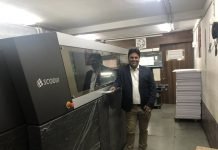‘Masterclass – How to Avoid Misinformation: A Workshop on Evidence-based Health Reporting’ was conducted by Dr. K Viswanath from the Harvard TH Chan School of Public Health. The TH Chan School of Public Health is active in India through its India Research Center in Mumbai, and one of its major activities is to help journalists improve the quality of science news under project Sanchar.
At the Media Rumble masterclass, the Sanchar or science and news communication portal www.projectsanchar.org was launched. The portal ‘is aimed at building capacity and facilitating the adoption of practices to use or draw on evidence in public health communication and practice.’
Sanchar’s mission and the idea of the portal are to encourage journalists to report on the latest science using evidence and data. To this end, the portal is meant to help media professionals in leveraging scientific evidence in their articles and thereby to influence health-related knowledge and attitudes amongst the public and especially professionals and bureaucrats who make policy. In a country where superstition and misinformation reign at the highest level of government and where rationalists are hounded and murdered, this could be a welcome contribution to the landscape of not just health journalism but to all walks of creative life.
The Sanchar portal contains policy briefs that concisely summarize key findings in reproductive, maternal, newborn, child and adolescent health (RMNCH+A) and nutrition with data in an accessible format for interpretation and use by journalists in their articles.
Dr. Viswanath in his presentation spoke of his concern about the flow of information and misinformation in the light of public health institutions and professionals being both consumers of information as well being the producers and sources of information. He said that scientific and credible communication faces a major challenge from both the life sciences revolution and the information revolution that contribute to the creation of 5 exabytes of online data daily. “This is equal to 250 Libraries of Congress each day and what is needed is the heuristics to separate the wheat from the chaff.”
Science is continuous and not episodic like journalism
The flood of data and information reflects the continuous process of science while reflection and writing about it are generally a sample, a slice, or a cutaway cross-section picture which is episodic. Dr. Viswanath brought up one of my favorite words, innumeracy, which is the inability to understand numbers and its near cousin ‘research illiteracy’ or inability to comprehend and understand research and data. The subject of misinformation or spreading false ideas or pseudoscience would not have been out of place even in the Media Rumble session on fake news.
The workshop attended by a healthy Media Rumble of journalists and documentary filmmakers had a bit of show and tell. It demonstrated the components and information hierarchy of scientific papers and how to interpret these while avoiding some of the pitfalls. For instance, to learn to pay attention to how the reported studies were designed and how the data was collected. Several key open access institutional sources of reliable information were also suggested.
It was suggested that health journalists and research professionals address technical questions using the PICO method or framework. The PICO acronym stands for Patient, Problem or Population; Intervention; Comparison; and Outcome; a framework that is quite similar to most types of research and analytical work.
Dr. Viswanath was not shy about speaking on the need for policy and even positive discrimination in providing health access and services. “We need to mitigate inequities in health and especially public health. Inequities are unacceptable, they are morally unjust and [the work of health professionals] is to figure out how we can mitigate them,” he said. For me, it was the most useful and only moral session of this Media Rumble.

















